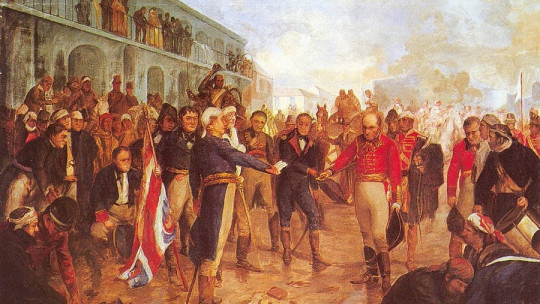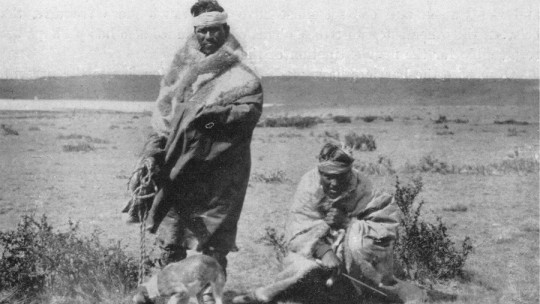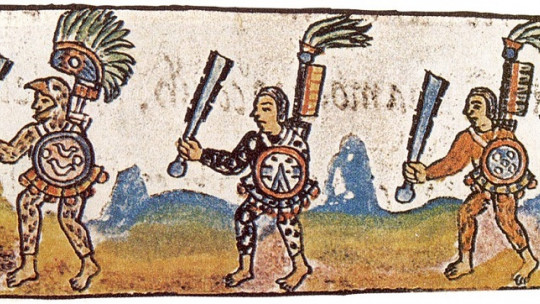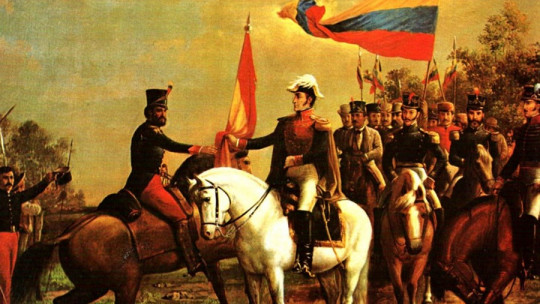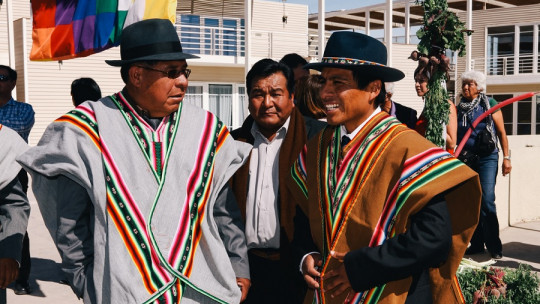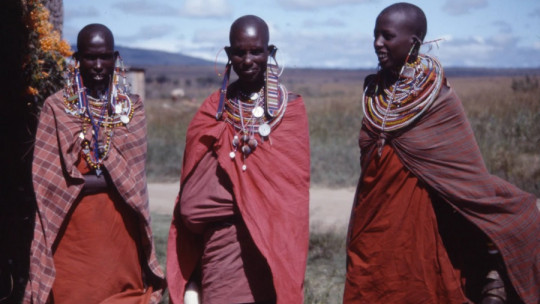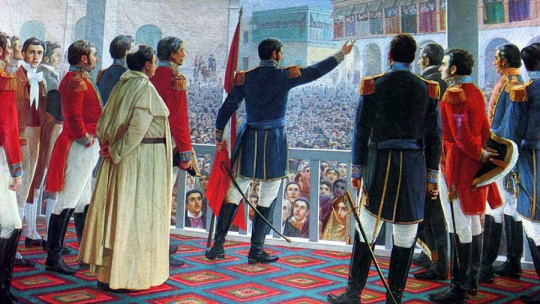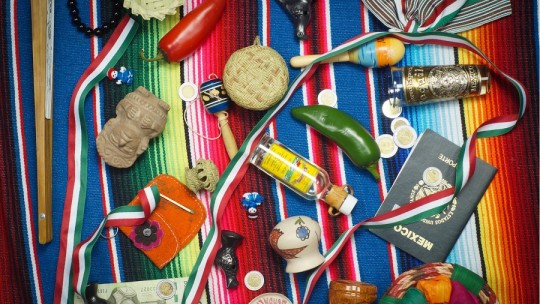Argentina is a country with a lot of history. The large number of ethnic groups, its geographical position, its extension and natural resources have made this country a territory with many European features but without forgetting its location in the South American cone.
Since it was “discovered” by the Spanish and Portuguese in the 16th century until today, there have been many historical events that have occurred in the country of the Río de la Plata. Let’s find out what they have been the main historical events of Argentina
The 15 most important historical events in Argentina
Argentina is a great nation, both in the literal and figurative sense. This country has a total area of 2,780,400 square km, 45,195,777 inhabitants and a coastline of 4989 km. Located in Latin America, Argentina was populated by different ethnic groups throughout its history, with Guaraníes, Mapuches, Aymaras, Wichis and many indigenous peoples until the arrival of the white man who, since then, has been responsible for making the country what it is today.
The history of Argentina is very extensive, even if we only take into consideration the arrival of the Castilians and the creation of the provinces and viceroyalties that were established in the South American cone. There have been many historical events that have marked the history of Argentina, a nation that shares many European traits but that also shares the political and economic instability of the rest of the Latin American countries, as we will see in the important historical events that come next. continuation.
1. Strait of Magellan
On October 21, 1520, Ferdinand Magellan reached a cape in southern Patagonia , which marks the strait that separates the South American continent from Tierra del Fuego. He and his crew have just discovered the passage to the west they have been searching for. Later, this strait would be named the Strait of Magellan in his honor, being a key point for international trade, along with the Panama and Suez Canals.
2. Foundation of Buenos Aires
On August 24, 1535, the expedition of the Spanish admiral and conqueror Pedro de Mendoza set sail from the port of Sanlúcar de Barrameda (Cadiz) , made up of more than a dozen ships and 2,200 men. Their mission is to transport a group of settlers and one hundred horses to the Río de la Plata, build three forts and build a royal road from that region to the Pacific Ocean.
The objective was to beat the Portuguese in the race to obtain riches that, according to indigenous legends, were there. He will reach his destination in January 1535 and, on February 3, he will found in that place a port defended by a fort that he will baptize with the name of Santa María del Buen Ayre, future Buenos Aires.
3. Discovery of Iguazú
On January 31, 1542, the Spanish navigator and explorer Alvar Núñez Cabeza de Vaca, while carrying out a land expedition from the Atlantic Ocean to Asunción in Paraguay, discovered the famous Iguazú Falls, on the current border of Brazil and Argentina. These wonderful natural beauties, among the most important on the planet, will be declared a Natural Heritage of Humanity by UNESCO in 1984.
4. British occupation of Buenos Aires
On June 27, 1806, as a result of the alliance between Napoleon and Spain, 1,500 British soldiers under the command of William Carr Beresford occupy the city of Buenos Aires, this being the first English invasion of the city The occupation ends after six weeks, after the surrender of the English troops to the local militias led by the French nobleman Santiago de Liniers, in the service of Spain.
Another invasion will occur on July 4, 1807, this time commanded by the English general Whitelocke who disembarks in Buenos Aires with 8,000 soldiers. On July 5, after a fierce fight through the streets of the city, the English general will lose more than half of his soldiers, between casualties and prisoners. On July 7, Whitelocke agrees to capitulate, and will withdraw along with the surviving soldiers from the city. He will definitively leave the territory on September 9.
5. May Revolution
On May 25, 1810, Buenos Aires culminated the well-known May Revolution, which had begun on the 18th of that same month. This was a revolt in response to the instability of the Spanish government, in which a group of revolutionaries managed to depose the viceroy and organize a new Government Junta known as the first National Government.
This fact will change the course of the country, accelerating the independence process, motivating the residents of the Río de la Plata region to feel only Argentine, something that would be witnessed a few days later. On May 29, the First Argentine Junta, headed by Cornelio Saavedra, decrees the creation of national military bodies. Its mission: to ensure the defense and self-determination of the Argentine people, and its territorial integrity.
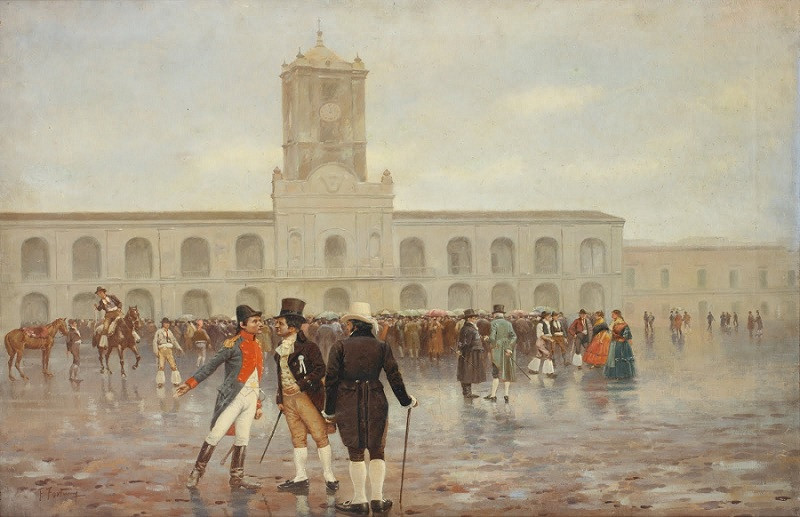
6. Creation of the white and blue flag
On February 13, 1812, in the city of Rosario, General Manuel Belgrano proposes to the Government the creation of the national insignia , in order to motivate the soldiers in the fight for independence. This proposal was made in view of the fact that, until that moment, the Army corps used different banners. It was necessary to use only one, one that represented the unity of the Argentine people and, thus, on February 18, the Triumvirate approved the use of the white and light blue flag, the current flag of Argentina.
7. Inauguration of the General Constituent Assembly
On January 31, 1813, in the United Provinces of the Río de la Plata, the General Constituent Assembly was inaugurated. In its first sessions, Carlos de Alvear is elected president of a territory that declares itself sovereign.
In the same Assembly Noble titles are abolished, mayorazgo is eliminated, freedom of wombs is declared (children of slaves are free), tributes and personal services of indigenous people are prohibited and the coat of arms and national anthem are made official.
- You may be interested: “The 6 forms of government that govern our social and political life”
8. Independence of Argentina
On February 20, 1813, General Belgrano’s forces defeated General Tristán’s forces in the Battle of Salta, decisive for the independence of Argentina. A few months later, on April 13, José Gervasio Artigas, near the Ayuí Grande stream, dictates and sends his famous “instructions” to Buenos Aires, a program that represents the interpretation of the fight for the independence of America from Spanish power.
After years of battles, struggles and political debates, On September 13, 1816, in the city of Buenos Aires and in a public ceremony, right in the Plaza de Mayo, the independence of the Argentine nation was sworn already declared on July 9 of that same year by the Congress of Tucumán.
9. Europe and Latin America: united by air
On February 10, 1926, aviators Franco, Ruiz de Alda, Durán and Rada arrived in Río de la Plata, who had achieved the feat of having traveled 10,270 km aboard the Dornier Wal seaplane, baptized “Plus Ultra”. They had fulfilled the dream of uniting Europe with Latin America by air, having begun their journey in the Spanish La Rábida on January 22 and making stops in Las Palmas de Gran Canaria, Praia (Cape Verde), Fernando de Noronha (Pernambuco, Brazil ), Recife (Pernambuco, Brazil), Rio de Janeiro and Montevideo (Uruguay). A total of 59 hours and 39 minutes had been spent in the air.
10. Peronism
On February 24, 1946, Juan Domingo Perón was elected president for the period 1946-1952, with 56% of the votes. Perón had been imprisoned the previous year for promoting a civil and military uprising, but workers’ mobilizations demanding his freedom, and the insistence of his wife Eva Duarte de Perón, forced his release. In 1947, with favorable economic conditions and with the support of the General Confederation of Labor, he created the Peronist Party.
He will be re-elected again, but his second term was very turbulent, facing serious problems and he will be removed by a military coup on September 16, 1955. The military uprising is led by Eduardo Lonardi, who forces Juan Domingo Perón to resign from the presidency. on September 19. Perón will flee to Paraguay, pass through Panama and, from there, travel to Spain, where he will marry María Estela Martínez de Perón. Meanwhile, Lonardi assumes power as provisional president of what he calls the Liberating Revolution.
Perón will be re-elected president of Argentina in 1971, however, on June 29, 1974, his wife María Estela, known as “Isabelita”, assumes the head of state due to the health problems of her husband, who died two years later. days later. Thus, Isabelita becomes the first woman to occupy the presidency of Argentina. With her, one of the darkest periods in Argentine history begins, being deposed on March 24, 1976 through a military coup d’état led by General Jorge Rafael Videla.
11. Argentine dictatorship
After carrying out a coup d’état on March 24, 1976, the Argentine army commanded by General Videla deposed President Isabel Martínez de Perón. Thus was born an iron and bloody military dictatorship that would last until 1983. It was a dark time, in which hundreds of students, union members, intellectuals and other professionals are kidnapped, tortured, and murdered
Faced with these disappearances, on April 30, 1977, in the city of Buenos Aires, Azucena Villaflor de Vicenti and 13 other mothers demonstrated, with great courage, in the Plaza de Mayo in front of the government headquarters. They want to know what has happened to their children who were kidnapped, tortured and murdered by the military dictatorship, which has systematically violated human rights. Faced with the police order not to stop or group together, but to circulate, the Mothers of the Plaza de Mayo decide to walk around it.
12. Invasion of the Falklands
Still in the course of the bloody Argentine dictatorship, the government of Leopoldo Galtieri, whose prestige is clearly deteriorated with street demonstrations and its infamous habit of harshly repressing any opinion critical of power, decides that the time has come to do something to unite the Argentine people, gain popular support and divert social attention from the internal problems that are suffocating them.
Thus, On March 19, 1982, 50 Argentines under the orders of Galtieri landed in Leith Harbor, in South Gerogia, a British colony near the Malvinas (or Falkland) Islands Argentines plant their nation’s flag, thus increasing tensions between Argentina and Margaret Thatcher’s United Kingdom, provocations within the so-called “Operation Rosario.”
The invasion of the Malvinas Islands will take place on April 2 of that same year. Argentina decides to invade an archipelago with barely 2,000 people, all of them British subjects, and declares that they are Argentine. The silver nation has no problem killing British soldiers and civilians, a poorly considered decision considering that it is facing a militarily well-developed United Kingdom.
On May 4, 1982, an event occurred that would definitively prevent any diplomatic solution between the two nations. The British ship HMS Sheffield is hit in its control room by an Exocet missile fired from an Argentine fighter. The impact causes a fire, which causes highly toxic smoke, and sinks the ship in a matter of minutes. 20 crew members die and 30 are injured. The sinking shocks the British nation.
13. Fall of the military dictatorship
The Falklands War ends on June 14. The Argentine troops based in Port Stanley, capital of the archipelago, surrender two months after hostilities between Argentina and the United Kingdom began. The capricious conflict initiated by the Argentine dictatorship has led to the death of 700 Argentines and just over 200 Britons. This tragically stupid episode in the history of Argentina will accelerate the fall of the military regime, staged on October 30, and the subsequent restoration of democracy.
New elections are held, and Raúl Alfonsín, candidate of the Radical Civic Union, wins During his mandate he will have to face several problems: consolidate democracy in a society that was still overcoming the effects of the dictatorship and, at the same time, monitor the Armed Forces, suspicious of any change, in addition to fighting against inflation and the crisis. Of the debt.
14. The Corralito
On December 3, 2001, an economic nightmare of proportions larger than those of Argentine territory occurred: El Corralito The president of the country at that time, Fernando de la Rúa, decreed the limitation on the freedom to dispose of cash drawn from bank accounts, and made international transactions impossible. This measure was applied in response to the serious debt crisis of some 100 billion dollars, caused by an over-indebtedness policy.
The deprivation of the freedom to withdraw money from millions of citizens did not take long to receive a response. Demonstrations, violently repressed, took place throughout the nation, demonstrations in which there were deaths. All this economic and political chaos that Argentina experienced at the beginning of the new century, caused by the bad actions of its rulers, was what ultimately caused President de la Rúa to have to abandon power and flee by helicopter to avoid being lynched. by the crowd. Argentina had seen five presidents pass in less than a month.
The country’s banking closure lasted almost a year. On December 2, 2002, the release of retained deposits was announced, ending the peso/dollar equation and the devaluation of the Argentine currency began.
15. An American Pope
March 13, 2013. After the resignation of Benedict XVI, the Church has to choose the Catholic supreme pontiff. During the second day of the conclave, and during the fifth vote of that same day, Argentine Jorge Mario Bergoglio is chosen as Pope No. 266 , receiving the papal name of Francisco. He is the first American pope in history, in addition to being the first Jesuit.

